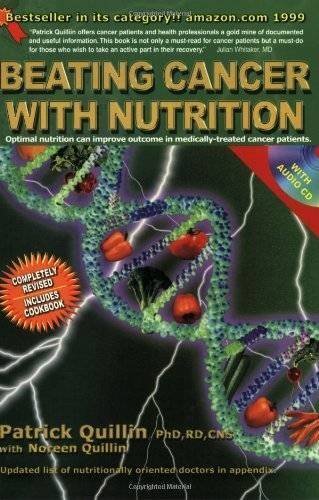DIM – a must for hormonally driven tumors
Indole-3-carbinol (I3C) is an essential nutrient found in Brassica vegetables, such as broccoli, cauliflower, and collard greens. Diindolylmethane (DIM) is the digestion derivative of indole-3-carbinol via condensation formed in the acidic environment of the stomach. If you are going to use I3C as a nutritional supplementA product, generally taken orally, that contains one or more ingredients (such as vitamins or amino acids) that are intended to supplement one's diet and are not considered food. (and you may want to consider this after reading this article), take DIM.
Diindolylmethane has long been studied for its anti-carcinogenic effects and its ability to bind and rid the body of “bad” estrogens. These so-called “bad” estrogens are both made in the body as intermediate metabolites and consumed through estrogen exposure in drinking water and estrogen disruptors such as plastics. The latter is termed xenoestrogens, as there are toxinsA poison made by certain bacteria, plants, or animals, including insects. from environmental sources.

Beating Cancer with Nutrition
DIM’s history for cancer prevention and therapy began when a mouse study showed its promising results in tobacco smoke, carcinogen-induced, lung adenocarcinomaCancer that begins in glandular (secretory) cells. Most cancers of the breast, pancreas, lung, prostate, and colon are adenocarcinomas.. [1] DIM was found to have “lung cancer preventive effects” mediated via modulation of the receptor tyrosine kinase/PI3K/Akt-signaling pathway. [2] DIM demonstrated “exceptional anti-cancer effects against hormone responsive cancers like breast, prostate and ovarian cancers.” [3]
In a recent study, it was concluded that DIM rather than I3C was the active agent in cell culture studies destroying cancer. [4]
Diindolylmethane transduces signaling via aryl hydrocarbon (Ah) receptor, NF-κB/Wnt/Akt/mTOR pathways, to help inhibit growth. These pathways are typically up-regulated in cancer patients yet DIM may help block many of these avenues.
DIM also was found to induce cell cycle arrest, helping slow replication of cancer cells. It also helps modulate key CYP enzymes in the liver, aiding important detoxification channels. DIM was found to alter angiogenesis, the lay-down of new vessels that cancers rely on for continued growth. It decreases cell invasion, metastasisThe spread of cancer cells from the place where they first formed to another part of the body. In metastasis, cancer cells break away from the original (primary) tumor, travel through the blood or lymph system, and form a new tumor in other organs or tissues of the body. The new, metastatic tumor is the same type of cancer as the primary tumor. For example, if breast cancer spreads to the lung, the cancer cells in the lung are breast cancer cells, not lung cancer cells. and epigenetic behavior of cancer cells as well. [5]
Diindolylmethane was found to induce Nrf2-mediated, intercellular detoxification (GSTm2, UGT1A1, and NQO1) and antioxidant (HO-1 and SOD1) genes. These pathways are our essential detoxification pathways inside every cell. Think of them as the cellular garbage service that gets rid of the poisons that would otherwise wreak havoc. Individuals with genetic defects on Nrf2, Glutathione, and SOD genes have an even greater need to support such cellular garbage service.
Also, DIM has shown synergistic benefits with isothiocyanates, and sulforaphane, the nutrients found in cruciferous vegetables that have been found to have such wonderful benefits for patients with cancer. [6]
Overall, Diindolylmethane showed anti-cancer properties, especially in hormonally driven tumors. DIM is currently in clinical trials for various other forms of cancers. However, given its benefits to boost other natural therapies, it may be a good addition for all cancer patients.
References
- Kim YS, Milner JA. Targets for indole-3-carbinol in cancer prevention. J Nutr Biochem. 2005;16(2):65–73. [PubMed]
- Qian X, Melkamu T, Upadhyaya P, Kassie F. Indole-3-carbinol inhibited tobacco smoke carcinogen-induced lung adenocarcinoma in A/J mice when administered during the post-initiation or progression phase of lung tumorigenesis. Cancer Lett. 2011 [PMC free article] [PubMed]
- Acharya A, Das I, Singh S, Saha T. Chemopreventive properties of indole-3-carbinol, diindolylmethane and other constituents of cardamom against carcinogenesis. Recent Pat Food Nutr Agric. 2010;2(2):166–177. [PubMed]
- Bradlow HL, Zeligs MA. Diindolylmethane (DIM) spontaneously forms from indole-3-carbinol (I3C) during cell culture experiments. In Vivo. 2010;24(4):387–391. [PubMed]
- Banerjee S, Kong D, Wang Z, Bao B, Hillman GG, Sarkar FH. Attenuation of multi-targeted proliferation-linked signaling by 3,3′-diindolylmethane (DIM): From bench to clinic. Mutat Res. 2011[PMC free article] [PubMed]
- Saw CL, Cintron M, Wu TY, Guo Y, Huang Y, Jeong WS, Kong AN. Pharmacodynamics of dietary phytochemical indoles I3C and DIM: Induction of Nrf2-mediated phase II drug metabolizing and antioxidant genes and synergism with isothiocyanates. Biopharm Drug Dispos. 2011;32(5):289–300.[PMC free article] [PubMed]
